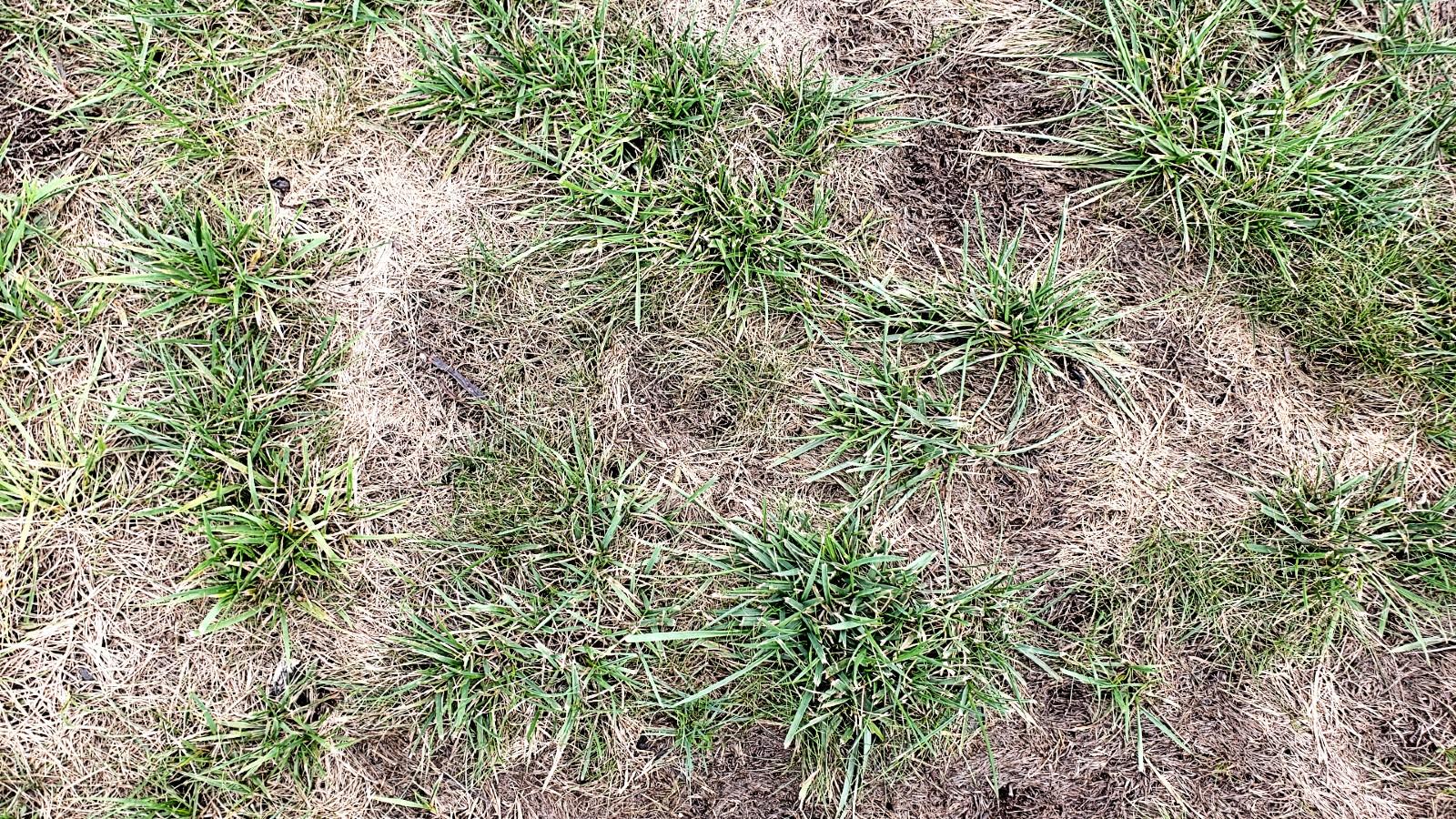Proper care during the first two months of establishment is essential to obtaining a healthy, dense turfgrass stand that is resistant to weed encroachment and other problems. Most of the necessary steps are based on common sense but are often overlooked by homeowners. By adhering to the following basic guidelines, the chances for establishing an attractive lawn with reduced pest problems will be greatly enhanced.
Although many people seed at the proper time, put much effort into proper soil preparation, and have selected quality seed or sod, some still find that the end product is not what they anticipated. Often, this failure is due to the initial lack of proper care after the seed has been sown. The following causes must be considered:
Excess moisture
Although not usually a problem, excess water from either rainfall or irrigation can lead to problems. The most common problems encountered are soil erosion, ponding of water, which leads to suffocation or scalding of young grass, and disease problems in the late spring or summer months. Avoid watering past the point at which the water will infiltrate the soil and it starts to pond or to run off the site. This point will occur sooner on clay soils and compacted soils. Also, in the late spring and the summer, avoid watering during the night. Several seedling diseases that can kill entire stands of young grass are substantially worse when leaf blades remain wet throughout the night.
Lack of sufficient moisture
From the time of germination and for several weeks thereafter, the soil surface should be kept moist. The conditions most conducive to rapid drying of the soil surface include windy days, low humidity, high temperatures, sandy soils that retain little moisture, and compacted soils that inhibit water infiltration into the soil. A combination of these factors can result in rapid turf loss due to drought. When the conditions exist that are conducive to rapid drying, several light waterings (1/16 to 1/4 inch water) a day may be needed to keep seedlings that have just emerged from dying. As the seedlings develop and their root systems increase, the surface may be allowed to dry out, but the root zone must still be kept moist. This may mean less frequent but somewhat more intensive irrigation.
Care must also be taken to not stop watering turfgrass mixtures too soon. Species that are quick to germinate and grow rapidly, such as perennial ryegrass and tall fescue, will establish quickly. Thus, reduction in watering may take place at an earlier date than slower germinating and growing grasses, such as Kentucky bluegrass. However, seed is often sold containing several types of grass. If a seed mixture contains both quick and slow establishing types of grass, care must be taken to maintain adequate moisture until the slower growing grass becomes well established.
As the turf stand continues to develop to the point where mowing is required, the necessity for irrigation continues to decrease. The soil at this point should be firm enough to allow the use of a mower without its sinking into the turf. If the soil is too wet when the new turfgrass stand is first mowed, ruts may be created or grass plants may be pulled out.
Mowing
Poor mowing practices are a primary cause for the decline of home lawns and are just as important for a young lawn as for an established lawn. The basic practices are virtually the same. First, it is especially important that a sharp blade be used so that sensitive seedlings are not shredded or pulled out. Second, do not mow if the air temperatures are over 90° F. Third, mow the new turf when the grass is no more than 1/3 higher than the height you plan to cut. Thus, if the mower is set for 2 ½ inches, mow the grass before it gets no higher than about 3 ¼ inches. Do not mow the grass too short. Grasses such as turf-type tall fescue, fine fescue, and Kentucky bluegrass should be mowed no lower than 2 inches and preferably 2 ½ to 3 inches. Low mowing heights will allow many weeds to get a foothold in a young grass stand. Finally, do not mow unless the soil is sufficiently firm to support the mower.
Lack of sufficient fertilizer
Fertilizer applied according to soil test results during the initial seeding period is sufficient for 6-8 weeks. Follow-up applications of fertilizer are made as part of a regular maintenance program. See the following Table for the Lawn Fertilizer Schedule
Weed competition
Weed control in newly seeded turf may become necessary if the competition is severe. Under some conditions, weeds are so aggressive that the grass never has a chance to establish and the area will have to be reseeded. Weeds are more likely to be a problem in spring seedings and mid to late fall seedings. If weeds are so extensive that hand pulling is not practical, use of herbicides may be warranted. Generally, it is feasible to apply broadleaf weed herbicides after new turf has been mowed 2 to 3 times but you should check the product label. Control of annual grasses is more difficult. As herbicides labeled for these uses change frequently, it is best to consult the following weed control publications for information on products that may be used on young lawns:
Adapted from AM 67, Caring for the Newly Seeded Lawn, by Thomas R. Turner Ph.D.
